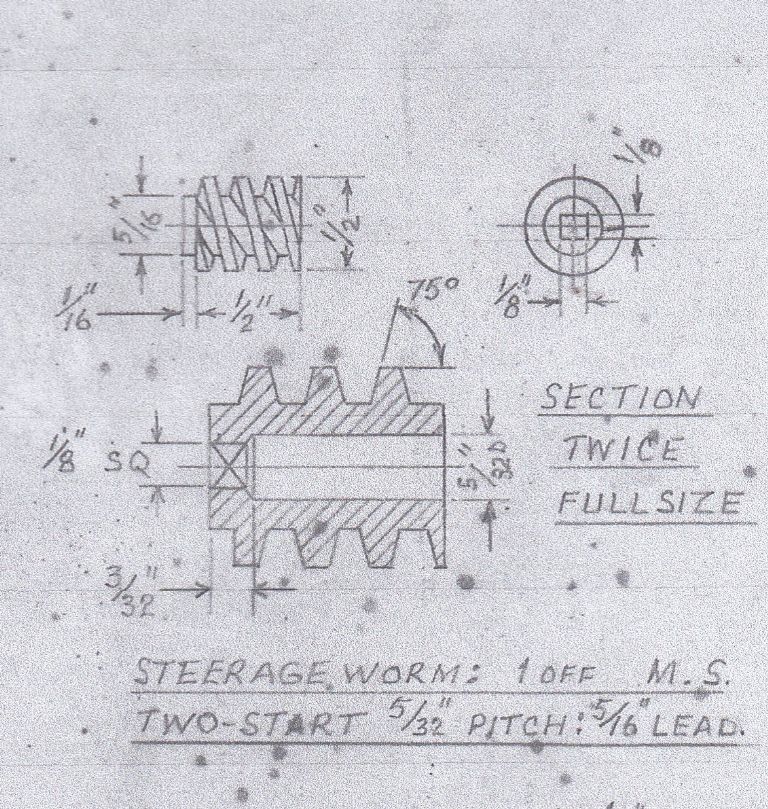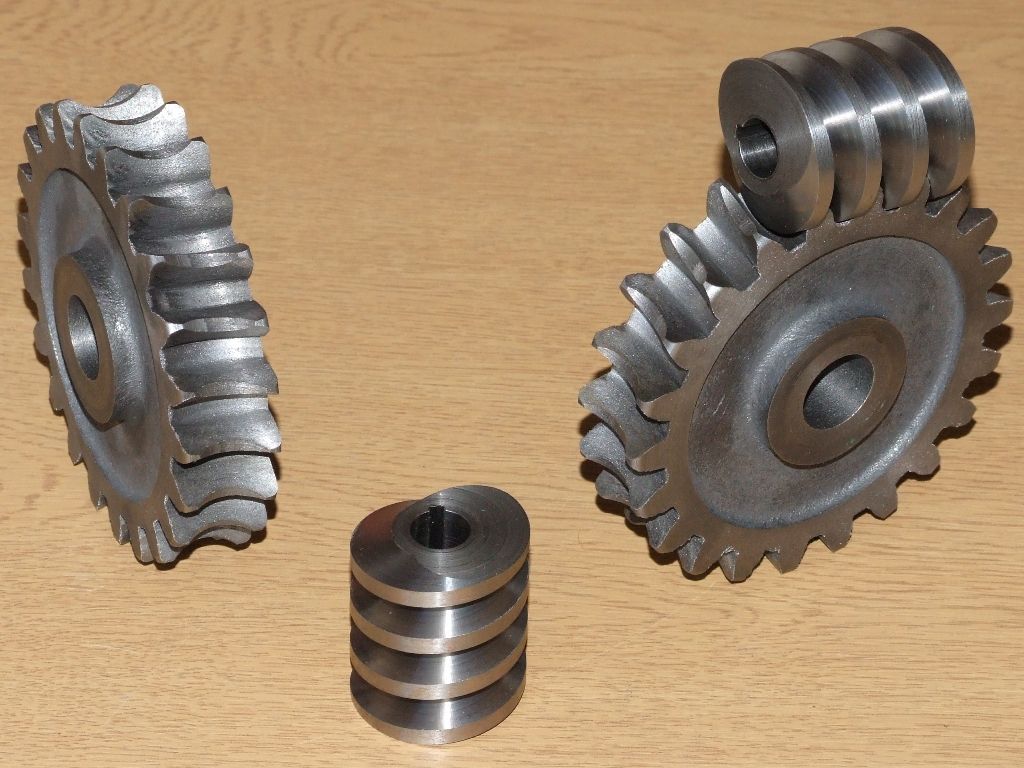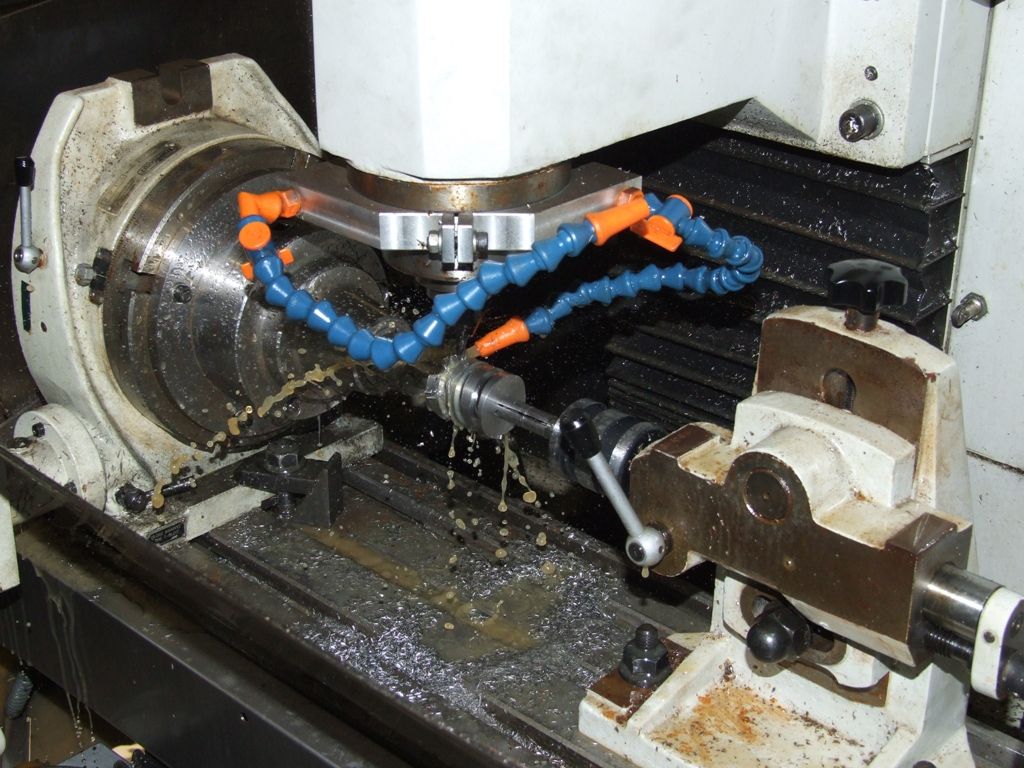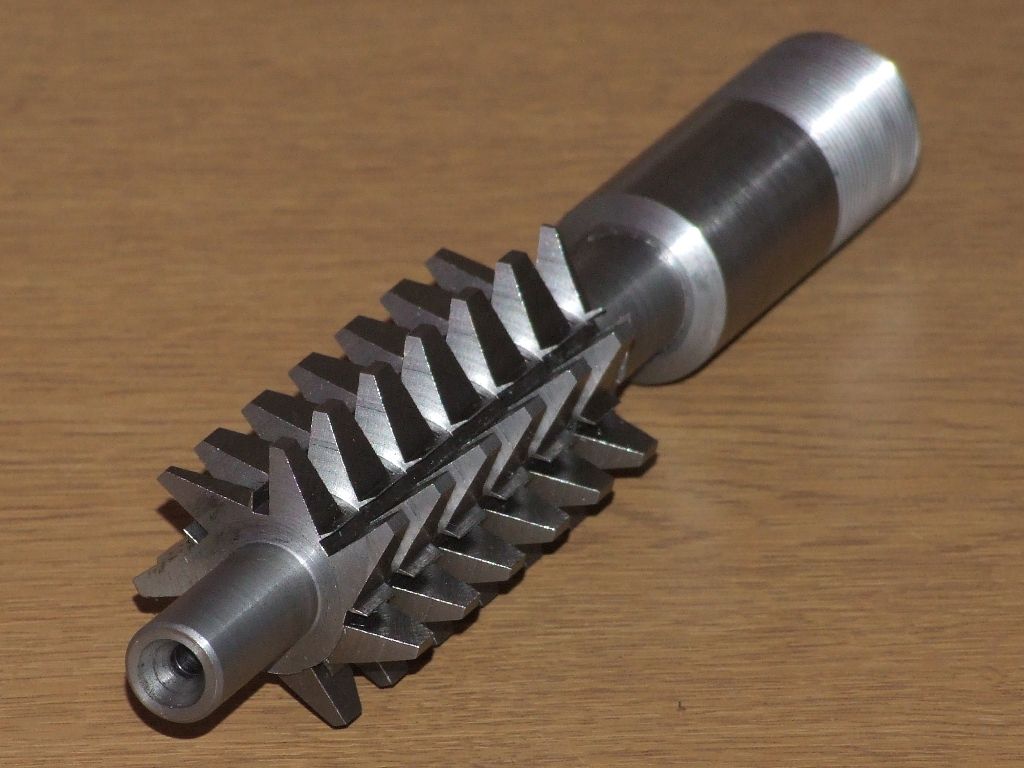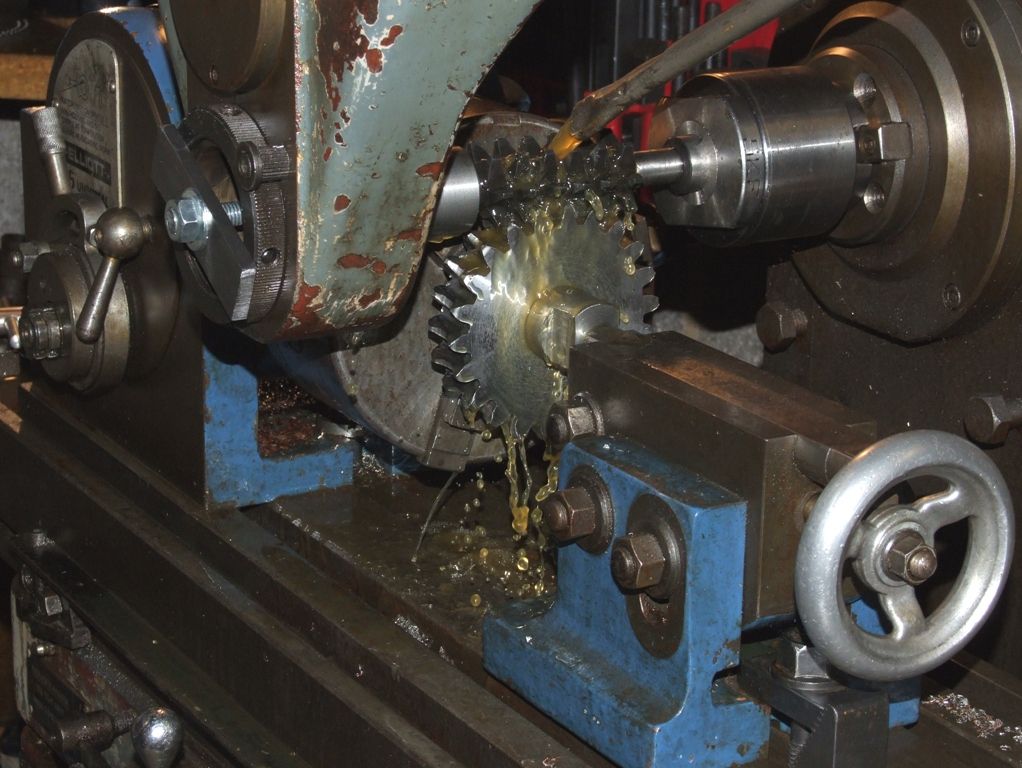It's worth consulting a book like Ivan Law's Gears and Gear Cutting, which goes into detail on correct tool shape and setting, etc..
An alternative method for cutting the second of a two-start thread, avoiding rotating the work-piece (e.g. by re-setting the change-wheels half a turn round) is to advance the top-slide by the pitch.
This is a problem I am facing, twice in fact.
1 – to make a 4TPI single-start worm as replacing the missing power-feed on a Denbigh H4 horizontal mill, keeping the exiting worm-wheel.
2 – For my steam-wagon. This has Ackermann steering but with no surviving works drawings or wagons, I've to "design" it as I go. The worm and wheel on there at the moment is of rather light duty so a temporary rig. Investigating, suggests a 1/4" lead worm and wheel but that would give at least 4 steering-wheel turns lock-to-lock, which seems excessive. Or a screw and nut for which I have a worm from I-don't know-what (washing-machine I think), of an odd 0.45" lead 2-start so giving about 2 turns on the steering-wheel.
So 1) Cutting a new worm, probably from free-cutting mild steel (I'm never going to wear it out!),
2) Cutting a hefty, internal, 2-start ACME-like thread in phosphor-bronze or cast-iron.
The Harrison L5 lathe will cope, according to the Operating Handbook that also says, with great care. The change-wheels for that 2.22 r. TPI thread work out at an exact 100 / 45 teeth.
I've investigated the model-engineering suppliers but none list steering worms and wheels!
Nigel Graham 2.


